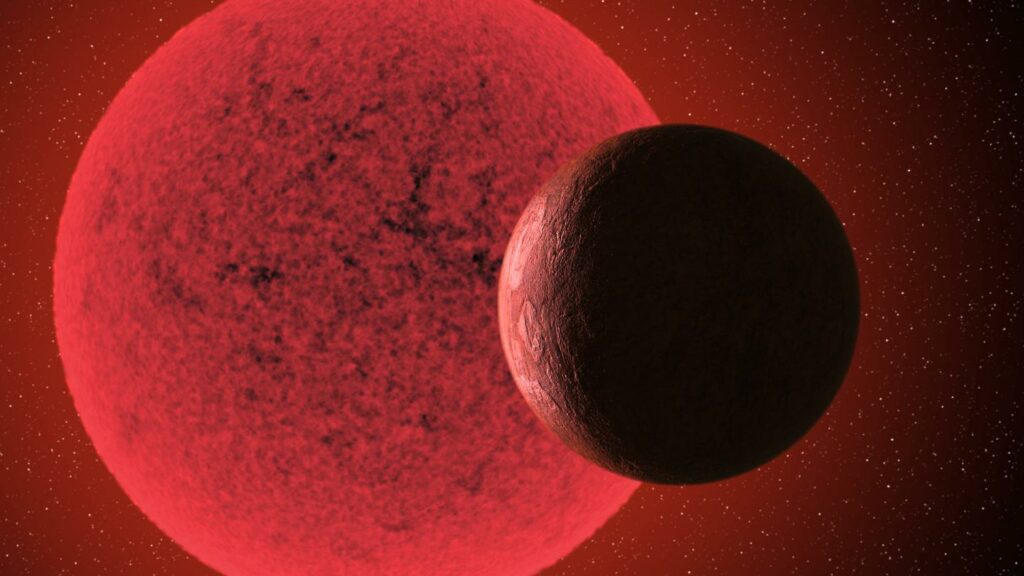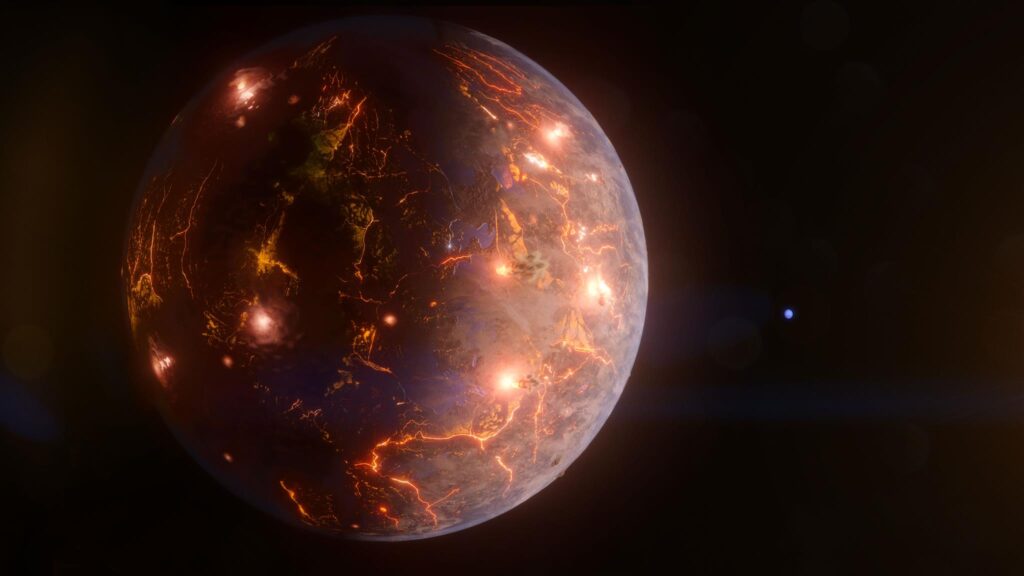An international team of astronomers has announced the discovery of an Earth-like exoplanet. Its surface can be covered with a large number of volcanoes, making it look like Io. This is stated in an article published in a recent issue of the journal Nature.
Third planet in the red dwarf system
The newly found exoplanet orbits a small red dwarf LP 791-18, located 90 light-years from Earth in the direction of the constellation Crater. Previously, astronomers were aware of two worlds in this system. One of them (LP 791-18 b) is 20% larger than Earth. The second (LP 791-18 c) is 2.5 times larger than the Earth and has seven times more mass.

In the course of observations made using the TESS and Spitzer orbital observatories, as well as a network of ground-based telescopes, astronomers were able to detect a third world in this system. It received the designation LP 791-18 d.
LP 791-18 d resembles the Earth in its size and mass. However, they cannot be called doubles in any way. The fact is that the orbit of LP 791-18 d passes at a very small distance from the star — it makes one orbit around its parent star in just 2.8 days. Because of this, LP 791-18 d must be in tidal capture and always be turned towards the red dwarf by the same hemisphere.
Volcanic version of Earth
LP 791-18 d attracted the attention of astronomers due to its orbit. The fact is that during its orbit around the star, it periodically approaches the much more massive LP 791-18 с. The minimum distance between the two planets is only 1.5 million km (this is 33 times less than the minimum possible distance between Earth and Mars). Each such approach exerts a powerful gravitational effect on LP 791-18 d, pulling its orbit. Because of this, the planet is deformed by the tidal forces of the red dwarf.

The researchers’ calculations showed that these deformations should produce a significant amount of heat in the interior of the planet. Most likely, it is discharged through volcanic activity. According to astronomers, LP 791-18 d may resemble Io, which surface is covered with a huge number of constantly erupting volcanoes.
Can LP 791-18 d be inhabited? Its daytime side is too hot for the usual life to occur there. However, astronomers admit that due to the violent volcanic activity, the planet may have an atmosphere. It is possible that its night side is cool enough for water to condense.
Whether this is true or not will become clear in the course of future observations performed with the help of more powerful telescopes. LP 791-18 c is already on the list of targets for the James Webb Observatory. Most likely, LP 791-18 d will also be included in it over time.
According to https://astrobiology.com
Follow us on Twitter to get the most interesting space news in time
https://twitter.com/ust_magazine

